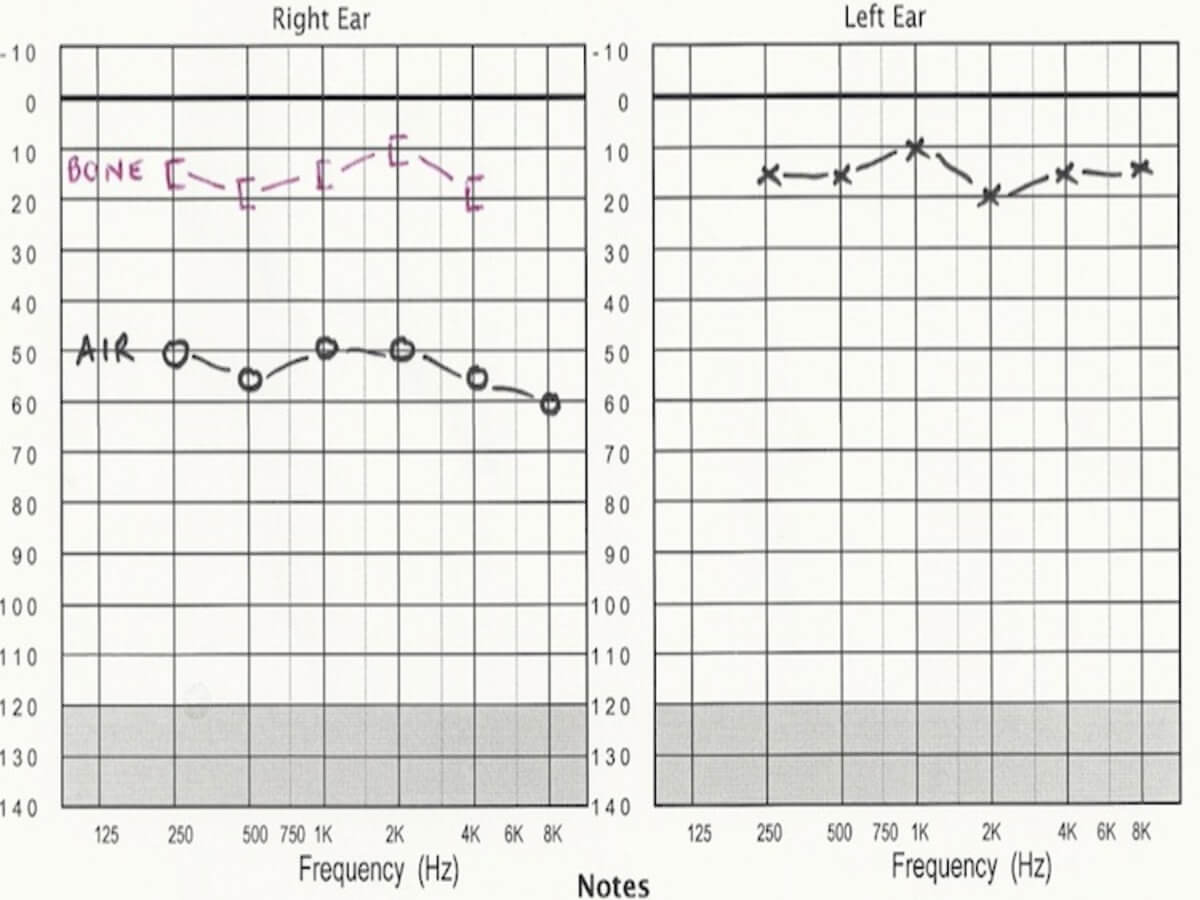Unlike sudden sensorineural hearing loss with inner ear or auditory nerve problems, conductive hearing loss (CHL) is brought on by outer or middle ear problems. The middle ear and ear drum do not effectively conduct sound, as the name implies. As a result, sound vibrations are considerably attenuated before they get to the inner ear organs, which are in charge of deciphering those vibrations and sending sound to the brain.
Read more: Sensorineural Hearing Loss
Audiologists generally agree that conductive hearing loss is the most prevalent type. Around 1.2 billion people worldwide, or nearly 15% of adults who are 18 and older, are thought to have hearing loss—explained that CHL happens when obstructions in the ear canal or someplace else in the middle ear prevent sound from reaching the middle ear and inner ear. These obstructions are frequently foreign items, but they can also occasionally take the shape of organic matter. Common organic blockages include large ear wax formations and harmed outer, middle, or canal ear anatomical structures brought on by trauma or inherited conditions.
What Are the Causes of CHL?
The following factors may contribute to this kind of hearing loss:
- Middle ear fluid brought on by allergies or a cold.
- Otitis media or an ear infection. Medial refers to the middle ear, while otitis is a phrase used to denote ear infection.
- Faulty Eustachian tube performance. Your nose and middle ear are connected by the Eustachian tube. Through this tube, middle ear fluid can be expelled. If the tube does not function properly, fluid may remain in the middle ear.
- A crack in the eardrum.
- Malignant tumours. Although they are benign tumours, they might obstruct the middle or outer ear.
- Your ear canal is blocked with cerumen or earwax.
- External otitis is an infection of the external ear canal. This is sometimes referred to as the swimmer’s ear.
- A foreign body lodged in your outer ear. An illustration would be if your kid accidentally got a pebble in his ear while playing outside.
- An issue with the middle or outer ear development. Some people don’t have an external ear by birth. A malformed ear canal or a problem with the middle ear bones may be present in some people.
Conductive Hearing Loss Audiogram
Sound waves often “travel” (or “conduct”) to the inner ear through the ear canal, ear drum, and hearing bones.
When there is an issue with the sound being “conducted” through this path, it is called conductive hearing loss. Therefore, anything that obstructs the ear canal and interferes with the ear drum’s vibration or the chain of hearing bones will result in a “conductive” hearing loss.
Surgical correction of conductive hearing loss is frequently possible. We can repair a damaged eardrum, unclog a blocked ear canal, or replace broken hearing bones.

Image via earsandhearinguk.com
The black rings and crosses show what the person can truly hear. If the sound were properly “conducted” through to the inner ear, it would appear as the half-red squares on the right. This audiogram implies that there may be an issue with the hearing bones, middle ear structures, middle ear space, ear canal, or ear drum. The patient can hear sound between the black circles and the red half squares if the issue with the “conduction” channel can be resolved. The red half squares are inside the normal hearing range, restoring the patient’s hearing (less than 25dB).
What Are the Symptoms of CHL?
The symptoms of this kind of hearing loss might be modest, particularly when diseases like earwax buildup or fluid accumulation begin mildly but become more severe over time. Watch out for these signs, advises the American Academy of Otolaryngology-Head & Neck Surgery:
- distorted hearing
- difficulty hearing soft noises
- dizziness
- hearing loss with time
- an earache
- drainage of liquid from the ear
- having clogged or full-headed ears
Types of Conductive Hearing Loss
A wide range of medical terminology can refer to specific forms of CHL. Unilateral conductive hearing loss refers to a condition that only affects one side of the sufferer. It is referred to as bilateral conductive hearing loss if it occurs on both sides. CHL may be mild, moderately severe, profound, or completely absent.
Symmetrical CHL is defined as having the same pattern in both ears. It is referred to as asymmetrical if it differs in each ear. Further explanation of CHL can be found in terms of the hearing frequencies that are impacted. High-frequency and low-frequency are two frequent terms used to describe frequency sensitivity.
What Treatments Are Available for CHL?
Although this solely depends on the degree of inner ear damage already done and the origin of the damage, some types of CHL can be almost totally cured with hearing aids. Due to its resonating and amplifying qualities, the Corti organ in the cochlea, a sensitive component of the inner ear, is frequently referred to as the body’s microphone. Hearing aids can help transfer sounds effectively if this Corti organ functions normally despite CHL, and 90%–100% hearing may be regained with their use. However, there is no certainty that medical or surgical interventions would completely reverse the symptoms of CHL. Thus other types of CHL must be treated. As a result, wearing hearing aids is frequently advantageous even for patients with procedures or treatments.
Making an appointment with us at JGlasess for a free hearing test is the first step in addressing hearing loss. After doing hearing tests, we will discuss the results with you and inform you of the extent of your hearing loss and your treatment choices like getting a suitable hearing aid. Untreated hearing loss might get worse with time, especially if you’re older or frequently exposed to loud noises or surroundings with very high pressures. One of the most crucial issues in preserving the quality of life is hearing health, especially as we age, and the inner workings of the ear can alter the balance and even assist prevent dementia when working correctly. For everyone, maintaining hearing health and preventing untreated hearing loss should be of utmost importance.
So, please book an appointment with JGlasses or contact us directly to find the solution for your hearing loss with our experts in hearing aids Singapore.

